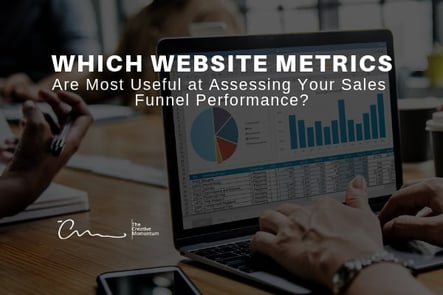
The sales “funnel” is represented as such because of the natural discrepancies between motivation in buyers. The top comprises users with passive interest and the smallest number of buyers at the bottom of the funnel prepared for purchase and subscription.
However, while a decreasing pool of leads is natural for the sales funnel, it’s possible to also experience bottle necks around specific steps in the journey. The only way to identify bottle necks in your content strategy and sales funnel is by analyzing the appropriate metrics.
Traffic and Engagement
A well-thought content strategy tailors different types of content to personas at different stages of the buyer’s journey. By tracking visits and views from specific content, you glean better insight into what is working and what isn’t.
Traffic and views are the starting point to determine whether or not your content is effectively attracting buyers and engagement determines whether or not it works by measuring the extent to which your views are leading to action. Ultimately, after all, appealing content counts for nothing without conversions.
Engagement is a hot topic in digital marketing for good reason, so there’s more than one approach to gauge it. The most straightforward measure of engagement is your CTA% rate based on page views, which gives you a solid understanding of conversion rates.
However, there are other metrics to measure this including average session duration and scroll depth. Content that causes users to spend more time taking it in or progress further than other pieces still presents a higher engagement rate than other elements of your content portfolio, regardless of click-through-rate, and it’s useful to keep track of these discrepancies as you evaluate your sales funnel.
Email Click Rates
Email campaigns are another popular tool for lead nurturing, with the goal of ushering buyers into the middle of the funnel. Metrics for email campaign efficacy include open rates, click rates and click-to-open rates (COTR).
Remember that most people engage all varieties of web content quickly and superficially. In other words, most people are only going to read a headline of a news article or, in this case, the subject line of your email.
Most email marketing providers will offer basic analytics including click-to-open rates, which help you gauge whether or not your headlines are landing with your leads.
Landing Pages and Submission Rates
At the bottom of the funnel, you’re looking at purchases and subscriptions. It’s entirely possible to have stellar results at the top and middle of the funnel, with performance grinding to a halt when it comes time to close.
Simply looking at ROI can give you a skewed view of your strategy that won’t be improved by changes to your content. If you notice a high click-through rate for CTAs and/or email campaigns accompanied by a substantial form abandonment rate, the flaw points towards your landing pages.
ROI Measures
All of the above measures can indicate a high performing sales funnel that still yields sub-par ROI, because none of these common measures of conversion rates take cost into consideration.
It may be that you’re effectively funneling users through the buyer’s journey, but at a higher cost than your budget affords. It’s also possible that high-performing sales funnels can be optimized by identifying the red spots in your marketing budget.
Cost Per Acquisition (CPA) highlights the cost to your business of acquiring a new customer, and it's calculated by dividing the total cost of your customer acquisition campaign by the number of total new customers.
Customer Lifetime Value (CLV) measures the revenue generated by each new customer, calculated from the yearly profit margin average per customer.
Using these types of measures in addition to your sales funnel you can balance your ROI with campaign performance.
Doing Your Homework
Now that you have a better idea of which elements of your sales funnel and strategy need improvement, it’s time to take actionable steps towards increasing performance and ROI.
It’s entirely possible that a well-researched strategy can still yield sub-par results in a digital marketing campaign, but it’s more often the case that the elements of your strategy that are under-performing are doing so as a result of sparse data.
Every element of your campaign from content to landing pages, UX design and emails needs to be tailored to a specific persona that you are targeting, and the only way to get a good idea of who that person might be is through ample data.
With a better idea of who you are marketing towards, you can tailor your content with higher relevancy to your personas. The age group, gender, and other characteristics of your persona can influence UX design or content type, which can be improved for specific stages of your sales funnel that are lacking.
While this all may seem like a substantial amount of data to keep tabs on throughout the buyer’s journey, the reward is a tangible resource for measuring efficacy and making improvements to the strategy driving your sales funnel.
Without these measures, all of your efforts amount to best guesses and shots in the dark, which will ultimately yield mixed results. However, by keeping close account of the strengths and weaknesses in your funnel, you bring hard numbers to the art of directing sales.


